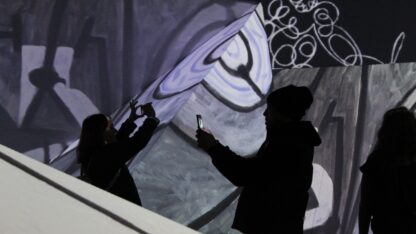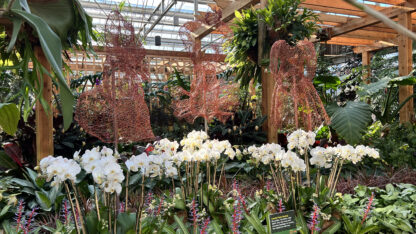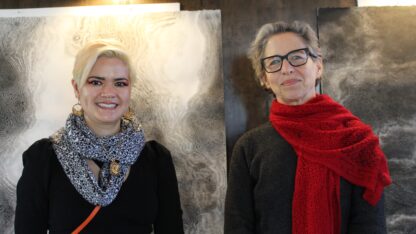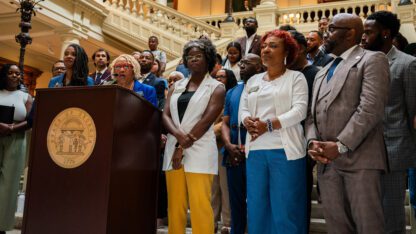The origin of Pasaquan, an inclusive folk-art 'psychedelic wonderland' outside Columbus, Ga.
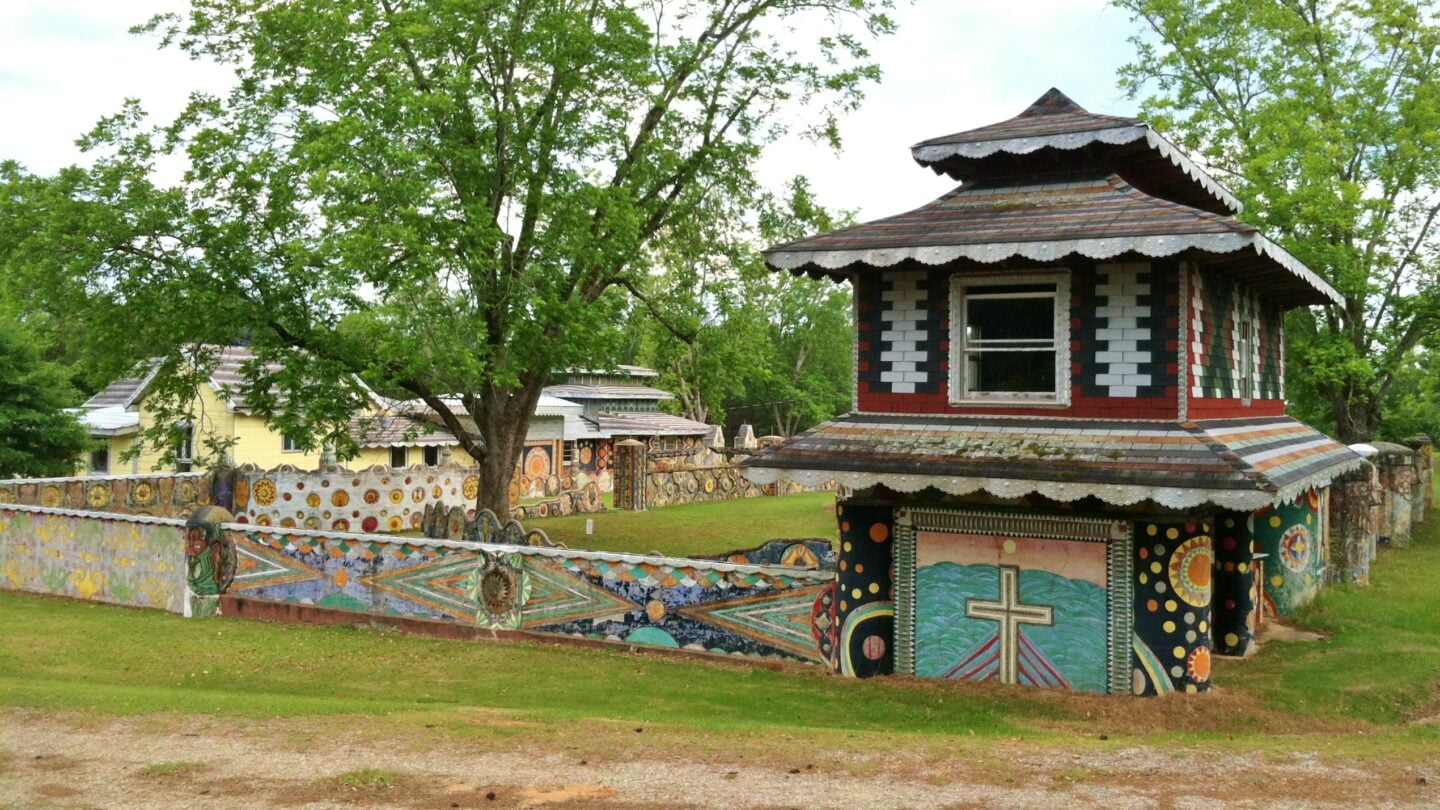
In Buena Vista, Georgia, just east of Columbus, sits a visionary art environment on a seven-acre compound known as Pasaquan. Eddie Owens Martin was a self-taught Southern artist who created Pasaquan in the late 1950s and continued his work there for 30 years. Columbus State University is directly involved in the conservation and documentation of Pasaquan. Michael McFalls is an art professor at Columbus State and director of Pasaquan. He joined “City Lights” host Lois Reitzes via Zoom to share history on Pasaquan’s eccentric creator and the future of the site’s preservation efforts.
Interview highlights:
The colorful early life of Eddie Owens Martin:
“He’d often introduce himself … ‘My name’s Eddie Owens Martin. I was born in 1908 on the fourth of July at midnight,’ and right then you get the sense of who this character was,” said McFalls. “But at the age of 14, Eddie Owens Martin hitchhiked to New York City. He’s living in New York during the ‘roaring ’20s.’ He’s a hustler. He’s working in gay nightclubs. He’s going even into the bar scene; he’s running an illegal gambling ring, and at the same time, he’s actually creating art.”
“He begins to go to the galleries and the libraries in New York City, and he’s teaching himself because he only has an eighth-grade education … What ends up happening is, in 1935, roughly, he has a vision.”
The dream that would become Pasaquan:
“He claims that these beings that had arms the size of watermelons … came to him and told him to change his ways, or this was the end of the road for him. And at that point, he becomes the first, and as far as I know, only Pasaquoyan, and he starts making work about this kind of pseudo-religion that he develops called Pasaquoyanism.”
“Eddie Martin thought that ‘pasaquan’ was a word that kind of merged different cultures, right? ‘Pasa’ is from a Meso-American culture, and he even said ‘quan’ was from Eastern Asian cultures, and he merged these two names together. So if you ever go to Pasaquan, you will see that,” McFalls said. ‘I love this quote from Tom Patterson’s book, ‘In the Land of Pasaquan,’ as well, ‘It’s a mock pre-Columbian psychedelic wonderland.’ It’s a place where all cultures, and all races, and all creeds are merged together.”
The challenge of preserving the treasure of Pasaquan:
“The past president of the university … came to our department, meaning at Columbus State University … and he basically said, ‘Who wants to do this?’ And I kind of became the de facto volunteer, and I’ve fallen in love with the site since. I saw the value then; I’ve always had an interest in self-taught visionary art, and this site alone is probably one of the more important sites in America,” said McFalls.
“One of our missions right away as a university was to begin to tell Eddie’s story and make sure that people realize the value of this work, and so students are really a key component of that. For example, right now, we have a student in chemistry and a group of students painting, and we’re beginning the second restoration process of the paint … So a place like Pasaquan is continually in flux, and we’re constantly in this restoration stage.”
Pasaquan, home to the visionary artwork of self-taught artist Eddie Owens Martin, is open to the public, Friday, Saturday and Sunday, 10 a.m. – 5 p.m. More information is available at pasaquan.columbusstate.edu.
